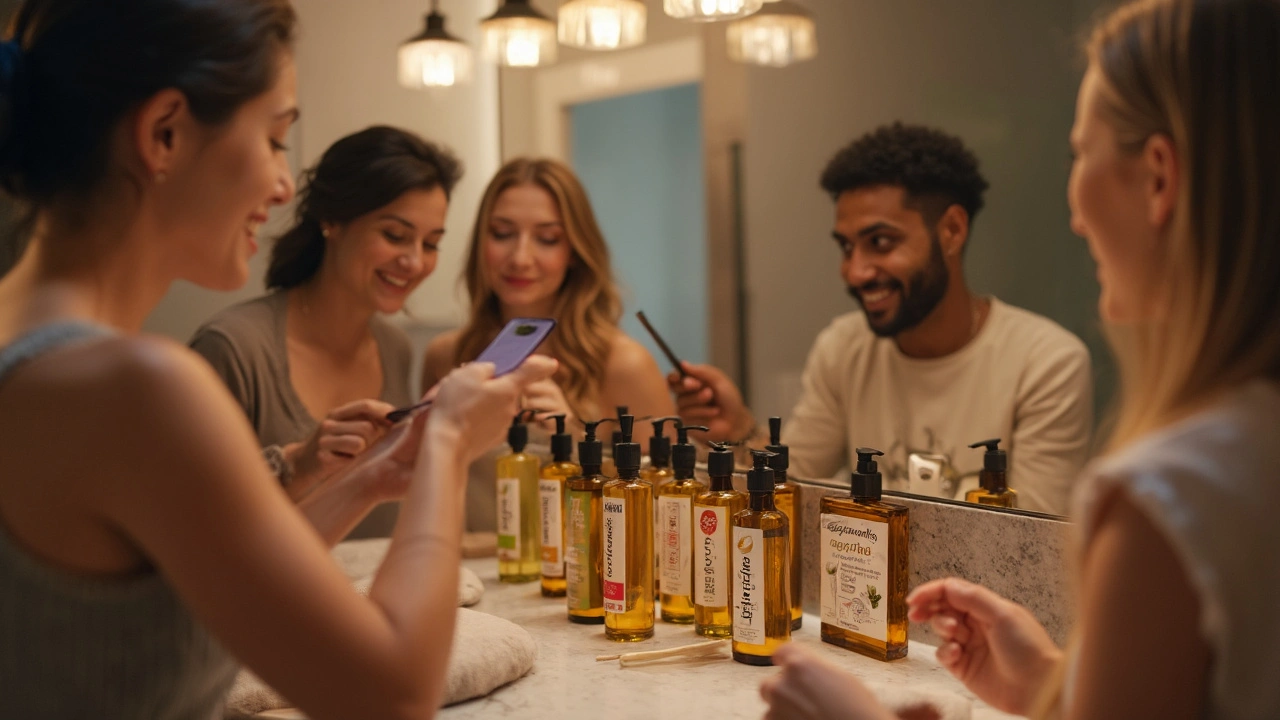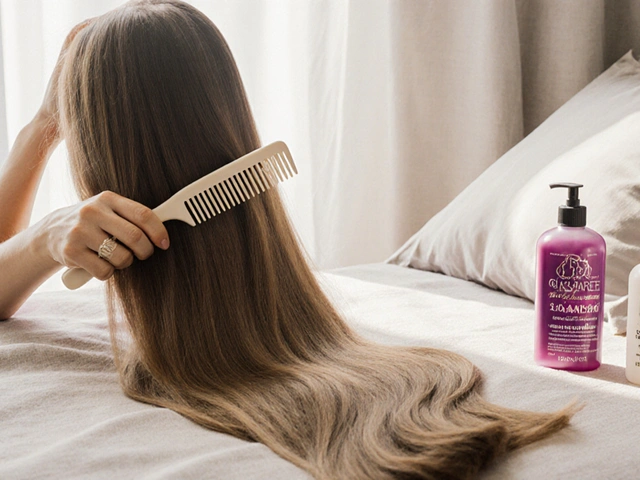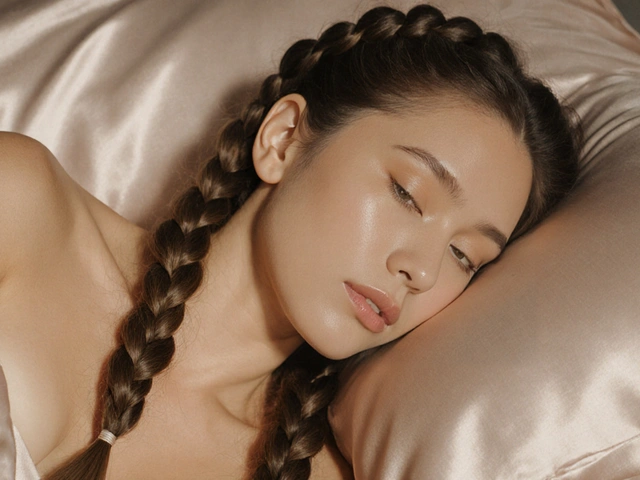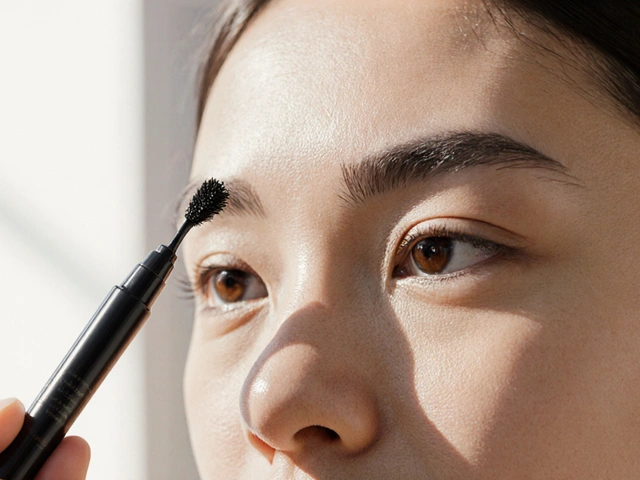If you walk down any beauty aisle, you'll probably spot dozens of small golden bottles labeled as 'liquid gold.' Argan oil has taken over the shelves, showing up in shampoos, serums, creams, and even pure as a magic fix for hair and skin. But here’s the catch: Not every bottle delivers what it promises on the label. Most people don’t realize that the difference between real, high-quality argan oil and a cheap knockoff comes down to much more than just the price tag. The wrong bottle won’t just waste your money—it could mess up your hair and skin, too.
What Makes Argan Oil So Special?
Let’s talk about what sets argan oil apart before getting into specific brands. This oil comes from the nuts of the argan tree in Morocco. Sounds exotic, but there's a reason it’s earned so much hype. Packed with vitamin E, fatty acids, antioxidants, and plant sterols, pure argan oil brings a boost to your skin, scalp, and hair that most other oils can’t match. There’s even a study published in 2023 by the Journal of Cosmetic Science showing argan oil can increase hair elasticity by up to 45% after just six weeks of use. Wild, right?
But there’s a flip side—real argan oil is tricky to make. The process is mostly done by hand by Moroccan women’s cooperatives, who crack the nuts, extract the kernels, and press the oil all without using heat. This slow, careful method keeps the nutrients intact. Fast, cheap, or solvent-based extraction? You end up with oil that's stripped of the goodness you actually want. Another clue: pure argan oil smells a bit nutty and looks golden yellow, never clear or watery.
You’re probably thinking, "So why do some bottles cost twenty bucks and others nearly a hundred?" It’s the mix of authentic sourcing, manual labor, and honest bottling. Some companies buy in bulk and dilute the oil or even sneak in extra fillers—watch out for argan oil blends filled with silicone or fragrance instead of the real stuff.
How to Identify Pure, High-Quality Argan Oil
If a brand claims "100% pure argan oil" right on the front, shouldn’t you just trust the label? If only it were that simple. The sad truth is, labeling regulations for beauty products are a bit loose. The only way to be sure is to read the back label carefully. Good argan oil usually has just one thing on the ingredient list: *Argania spinosa kernel oil*. Anything else, move on.
Another key is to hunt for cold-pressed oils. Heat destroys delicate antioxidants and vitamins. That warm, rich, nutty scent of authentic oil? It fades fast when companies cut corners. Plus, pay attention to packaging—a good bottle of argan oil comes in dark glass, never clear plastic. Light and plastic degrade the oil and make it go rancid faster. Fun fact: properly stored argan oil can last up to two years.
Ever notice some argan oil is labeled for cooking, while others are "cosmetic grade"? Culinary argan oil is roasted, giving it a strong nutty flavor—great for salad, not for skin. For beauty use, always pick unroasted, cosmetic grade. The Moroccan government set up a Quality Label (IGP) to spot authentic argan oil, but it’s still rare to see it on export bottles. Here’s a handy table to help you spot the real deal:
| Quality Sign | What to Look For |
|---|---|
| Color | Golden yellow (not clear, not green) |
| Scent | Mildly nutty, not strong or perfumed |
| Ingredients List | Only "Argania Spinosa Kernel Oil" |
| Packaging | Dark glass bottle |
| Texture | Light, non-greasy, absorbs quickly |
Here’s a pro tip: pure argan oil absorbs almost instantly. If the oil sits greasy on your skin for ages or leaves residue, it’s probably cut with something else. Trust your senses—they’re usually right.

The Best Argan Oil Brands in 2025: Honest Reviews
Narrowing down the best argan oil brands isn’t a matter of picking who has the flashiest Instagram. It’s all about product integrity, fair trade sourcing, how the oil is extracted, and yes—how your hair and skin actually feel after using it. Here are the brands that keep landing on top "best of" lists, recommended by stylists, dermatologists, and regular folks:
- Pura D’Or Organic Moroccan Argan Oil – Always in top spots. Certified USDA Organic, cruelty-free, and comes in a sturdy dark bottle with a pump. Most users swear by it for frizzy hair and dry skin. It’s cold-pressed, single-ingredient, and batch-tested for quality. People love that it doesn’t smell weird or go rancid fast.
- Josie Maran 100% Pure Argan Oil – A bit pricier but backed by ethical sourcing directly from Moroccan women’s collectives. Dermatologist-tested and non-comedogenic, so it’s solid for sensitive skin types. Their size range is convenient, from mini bottles for travel to jumbo for regulars.
- Acure The Essentials Moroccan Argan Oil – Affordable, vegan, and easy to find in most stores. Lightweight and fast-absorbing, great for those who hate feeling oily. Their oil is cold-pressed and certified organic by the USDA too.
- Shea Terra Organics 100% Pure Moroccan Argan Oil – What sets this one apart is their commitment to traditional production. It’s bottled fresh, and enthusiasts praise it for the genuine nutty scent and thicker texture—a sign of minimal processing.
- Kate Blanc Cosmetics Argan Oil – This one is endlessly talked about on beauty forums. The price is right, and they opt for a dark amber glass bottle with a dropper for precise use. Lab-tested for purity and no weird filler oils added, so no random breakouts or scalp irritation.
Each of these brands checks the purity, sourcing, bottle, and scent boxes. If you need numbers to back it up, a 2024 customer survey by SkinCarma ranked Pura D’Or as most reliable, with 91% of users noting visible scalp and hair improvement within a month. Not bad for a few drops a day, right?
But here’s the thing—don’t be tricked by price alone. Some expensive brands, like Moroccanoil, are loved for their scent and silky finish but contain a blend of silicone and only a tiny portion of actual argan oil. Always read the ingredient list, since "Moroccan oil" doesn’t always mean pure.
Worried about allergic reactions? Patch test first. Sometimes even the best oils can cause issues if you have a nut allergy.
How to Use Argan Oil for Best Results
So you’ve picked a bottle. Now what? Argan oil is super versatile. For hair, rub a few drops between your hands and smooth it over towel-dried strands—from mid-length to ends for shine and frizz control. It doubles as a leave-in conditioner, a scalp treatment you massage in before shampooing (especially if you’ve got dryness or flakes), or a protectant before heat styling.
For skin, dab a drop right onto clean fingertips and press gently into your face at night. It locks in moisture without clogging pores, which is a huge deal for folks who battle both dryness and breakouts. A little goes a long way—you don’t need to soak your face or hair. Add a drop to your regular lotion or mix with foundation for a dewy finish.
- Tip: For overnight hair repair, coat dry ends and braid your hair before bed.
- Tip: Massage into cuticles and elbows during winter for chapped skin relief.
- Tip: Mix with a few drops of lavender oil for a DIY relaxing scalp massage.
Don’t forget about your pets—vets sometimes recommend a tiny amount of pure argan oil on dogs with flaky skin, but always check with a professional first.
If you spot "deodorized" or "fragrance-free" on the label, it could mean the oil has been processed to remove its natural scent, often stripping out beneficial nutrients. Avoid heavily processed options if you want the full benefits.
One last fact to impress your friends: Morocco produces about 4,000 tons of argan oil each year, but growing demand in beauty worldwide keeps prices steady. When you invest in a good bottle from a reputable brand, you’re also supporting local communities in Morocco—so it’s beauty with a side of social impact.
Bottom line—don't stress over complicated marketing. Trust brands with third-party certifications, honest ingredient labels, fair pricing for the work involved, and proven results. Your hair, skin, and even your wallet will thank you later.







Peter Reynolds
July 17, 2025 AT 23:21Great topic! I've always wondered which brands truly deliver on quality argan oil without overhyping. It's good to see a focus on ingredient quality because honestly, not all products labeled 'argan oil' are equal. I appreciate that the post mentions real user tips — sometimes those are more valuable than a fancy marketing page.
I've used a few brands and noticed a huge difference in how my hair feels after a few applications. Some claim to be pure but have additives that cause build-up. I hope the guide covers these nuances because it helps people make smarter choices rather than blindly buying the most expensive bottle. What do you all usually look for when shopping for argan oil?
Fred Edwords
July 20, 2025 AT 10:00Indeed, the subject of argan oil brands requires precise scrutiny, primarily because of rampant mislabeling and quality control issues in the cosmetic market. It's crucial to verify the ingredient list thoroughly. A 100% pure argan oil should contain no additives, fillers, or fragrances, which might otherwise diminish its efficacy.
From a consumer perspective, third-party certifications and organic labels can serve as reliable indicators of product authenticity. It's reassuring to find reviews backed by factual data and user experience. I await the detailed comparisons eagerly!
Sarah McWhirter
July 21, 2025 AT 16:50Oh sure, argan oil is all the rage, but have you ever stopped to think if maybe the 'best brands' listed here are just part of a bigger scheme? Big beauty corporations often push these products with slick marketing while the 'real' stuff, the genuinely potent oils, is kept out of the mainstream. What if this guide is just another commercial play to herd us into overpriced choices?
And those so-called 'real user tips'—aren't those easily manipulated by paid influencers who aren’t even using the product genuinely? I’m skeptical about trusting just any review unless it comes from verified, unbiased sources. Thoughts?
Ananya Sharma
July 22, 2025 AT 15:20Honestly, while many rave about argan oil, the overwhelming focus on brands detracts from a necessary examination of the socio-environmental impacts of argan oil production. The consumer culture here is complicit in supporting questionable supply chains without demanding transparency. We should be more critical about where this oil is sourced and who benefits from its commodification.
Moreover, the fetishization of beauty by pushing these products as miracle solutions distracts from genuine self-care and promotes a superficial moral stance on appearance. I challenge everyone to think beyond brand loyalty and question the ethics behind their choices.
kelvin kind
July 27, 2025 AT 12:16The article is well-timed. I've tried a few argan oil brands, and while the claims often sound the same, the results definitely aren't. I find that the oil's absorption and scent matter a lot personally. I tend to go for light, non-greasy finishes that won't weigh hair down or leave my skin feeling oily.
It's refreshing to see an honest approach that prioritizes ingredient quality over gimmicks. Sometimes simple is better, especially for sensitive skin. Does anyone have a favorite brand that's consistently worked for them without causing breakouts or buildup?
Ian Cassidy
August 1, 2025 AT 03:40From a formulation standpoint, the saponifiable fraction of argan oil and its content of tocopherols and essential fatty acids have a big influence on its efficacy. Not all oils are created equal, and differences in extraction methods and storage can drastically affect potency.
Many people don't realize the jargon behind the marketing claims—'cold-pressed,' 'organic,' and such—but these terms can be misleading if not regulated properly. The most reliable way to assess is to look for GC-MS (Gas Chromatography-Mass Spectrometry) verified products, though that's not always feasible for average consumers.
I'd like to hear if the guide mentions any technical certifications or lab tests on these brands.
Zach Beggs
August 4, 2025 AT 15:16Thanks for posting this! I have been using a high-end argan oil for a bit now, but partly because of a friend's recommendation rather than my own research. It seems a lot of us rely heavily on word of mouth or curated reviews, which can be hit or miss.
An unbiased buying guide that breaks down real user experiences and ingredient integrity is hugely helpful. It lets us make more informed decisions rather than guessing based on price or packaging. I hope the article also touches on how to spot counterfeit products in this category.
Kenny Stockman
August 10, 2025 AT 07:40Hey all, I've been into using natural oils for hair and skin for years, and argan oil's been in my rotation since forever. What I appreciate about thorough reviews like these is how they separate the legit brands from the fluff. It’s easy to get overwhelmed with choices.
One thing I always emphasize is trying a patch test—even if the brand has great reviews, your skin and hair might react differently. Also, consider how the oil fits your routine; some are better as leave-in treatments, others as occasional moisturizers. Anyone here experiment with mixing argan oil with other oils or products?
Antonio Hunter
August 14, 2025 AT 23:03I appreciate the openness of this thread. While argan oil certainly shows promise with its rich antioxidant properties, the market saturation with varying quality brands can be frustrating to navigate. Taking a long-term view, it's essential that consumers prioritize sustainability and ethical sourcing alongside efficacy.
The guide’s honest reviews hopefully shed light on brands that honor these values. Moreover, users should consider how consistent usage impacts results versus one-off trials. Patience and critical evaluation will lead to a better, more rewarding experience with argan oil products.
Paritosh Bhagat
August 16, 2025 AT 03:06It’s interesting how the conversation around argan oil here encapsulates broader issues of consumer awareness and marketing innocence. People often buy into these trends emotionally without researching how impactfully their purchases affect local economies or the environment.
Quality matters, yes, but so does honesty about the product's true capabilities and limits. Transparency from brands is a must, and guides like these can put pressure on companies to step up. We all deserve to know exactly what we’re putting on our bodies without hidden agendas or half-truths.